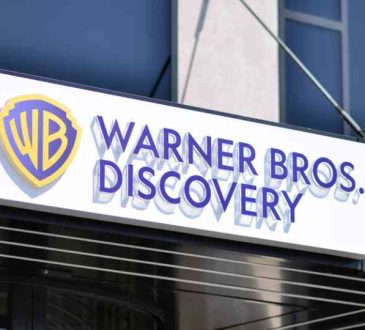Enriching Your Corporate Lobby’s Space to Better Tell Your Story

As we return to the office after countless months of COVID-prompted work isolation, take some time to reconsider your corporate lobby space. Does it complement your culture beautifully? Does it align with your tone and values? Here are some important elements to consider.
You only get one chance to make a first impression.
When people walk in the front door of your company — employees, potential employees, customers, prospective customers, investors, and so forth — your lobby makes a bigger first impression than you might think. A positive first impression means your visitor is starting with a level of excitement and intrigue that you can build upon. A negative (or even neutral) first impression means you have some work to do from the start to build a positive view of your business.
A couple of years ago, for example, I visited a business that was part of what you might call an old-fashioned industry. I assumed the interior would be rather plain, or maybe quaint, but its office design was unbelievably innovative and modern. And my impression of the company — and its capacity for innovation — changed the moment I walked in the door.
Some companies’ lobbies are so impressive and memorable that they’ve even acquired their own corporate folklore. Take this Salesforce lobby in San Francisco. Its enormous LED displays featuring nature scenes, coupled with the surrounding space’s fresh colors, artistry, and updated content, have made the Salesforce west lobby a one-of-a-kind experience.
Overall, a great lobby communicates innovation, creativity, and that a company truly invests in its people. Here are a few steps to take yours from a static space to an unforgettable conversation starter:
- Define your lobby’s purpose.
Talk with team members and executives who’ve been at your company the longest or who are guiding its future. Ask them what they think the purpose of your lobby should be and what company values and cultural elements it should reflect. Let them contribute to the brand in a different, yet meaningful way.For example, many organizations use the lobby as a sharing space to make visitors feel more welcome. Some of the most brilliant lobbies I’ve seen are open-air spaces with displays that include a combination of information, brand messaging, and art. This keeps guests engaged and informed and tacitly highlights the company’s use of technology to showcase the brand’s modernity.
- Identify your audience.
Clients, investors, suppliers, and partners aren’t the only people you’ll want to woo with a well-designed lobby. Because more people are choosing remote work whenever possible, your top buyers and vendors might see your lobby only a few times annually.With this, think about the people who will most often encounter your lobby. A space open to the public can look different from one that’s open to only employees or customers. However, don’t shortchange your employees if they’re the ones who’ll be using that space the most. Instead, think of creative ways to use signage or items in the lobby to ensure that all employees feel at home when they enter.
You’ll also want promising potential hires to feel drawn to work at your company from the moment they step foot in your building. More than two-thirds of companies say they’re having trouble recruiting and hiring, so your building’s atmosphere could make all the difference for a world-class job candidate deciding whether to work for your brand or for a competitor.
- Maintain a sense of consistency and scope.
It might be fun to have a lobby similar to Comcast’s headquarters in Philadelphia. Featuring high ceilings and a massive LED wall, it’s a state-of-the-art gem. At the same time, it wouldn’t make sense if the interior of the building didn’t continue the nod to digitalization and artistry.Remember that your lobby shouldn’t feel like a bait-and-switch tactic for people who continue into the rest of your office. A sparkling lobby will make a terrific impression, of course, but that impression won’t hold for long if you neglect your conference rooms, hallways, offices, and furnishings. Aim for a highly consistent look and feel throughout the building.
- Display original artifacts to build up the branding.
Let your lobby visually tell the story behind your brand, its mission, its people, and its culture. In the lobby at White Castle’s headquarters, the interior nods to the past, present, and future of the company by operating as almost a museum, telling the iconic fast-food restaurant’s story. The updated environment includes plenty of interactive digital displays — including audio recordings and an interactive history wall — to give it a contemporary, forward-leaning feel.If your company has storytelling memorabilia, think of ways you can display it proudly. How do these artifacts reflect your brand’s history? How can you tell your brand’s story through your interior space? Connect your visual choices to your overall brand story.
- Choose the right time for a revamp.
Give yourself some time to plan, but don’t waste the time you have. Once you’ve settled on a design, set a date for installation and upgrades. If a lot of employees telecommute, earmark the days when the majority will be working remotely. Making changes while fewer employees are in the office helps minimize downtime and relieves the need to divert foot traffic elsewhere.
As we slowly trickle back into office buildings, what you choose to do with your lobby will send a specific message about your company to the world. Make everyone remember your brand by giving your space a much-needed makeover.
Written by Bob Marsh.
Add CEOWORLD magazine to your Google News feed.
Follow CEOWORLD magazine headlines on: Google News, LinkedIn, Twitter, and Facebook.
This report/news/ranking/statistics has been prepared only for general guidance on matters of interest and does not constitute professional advice. You should not act upon the information contained in this publication without obtaining specific professional advice. No representation or warranty (express or implied) is given as to the accuracy or completeness of the information contained in this publication, and, to the extent permitted by law, CEOWORLD magazine does not accept or assume any liability, responsibility or duty of care for any consequences of you or anyone else acting, or refraining to act, in reliance on the information contained in this publication or for any decision based on it.
Copyright 2024 The CEOWORLD magazine. All rights reserved. This material (and any extract from it) must not be copied, redistributed or placed on any website, without CEOWORLD magazine' prior written consent. For media queries, please contact: info@ceoworld.biz
SUBSCRIBE NEWSLETTER








